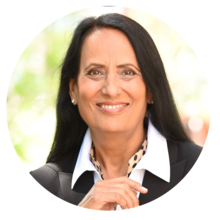About this Presentation
In many supply chains customers and their suppliers unnecessarily suffer shortages, late delivery and excess inventory that seriously threaten profits. This session will enable you to understand how pull systems, encompassing fast response, can be developed in complex make to order (MTO) and make to stock (MTS) supply chain environments together with deep insights into the underlying logic. The drum-buffer-rope (DBR) application of TOC was originally concerned with the MTO environment where the cost world thinking manifests itself in local optimization, intermediate due dates and views any excess capacity as waste. DBR directly challenges this thinking by acknowledging the critical role of capacity buffering, the characteristic behavior of the flow paths (VAIT), the merits of aggregating buffers and the central role of what is now referred to as buffer management (BM). BM is a management signaling system based on four functions (prioritize, expedite, escalate and target improvements) that is key to this and all other TOC applications. Simplified DBR (SDBR) is a development that avoids the complexities of the close scheduling of even one resource by managing the aggregated planned load on the most heavily loaded resources and delegating the detailed scheduling to the shop floor. This application is now widely used as it provides the benefits in most environments without having to address the complexities of scheduling algorithms. Make to availability (MTA) and replenishment are TOC applications that are concerned with MTS environments and therefore stock as opposed to time is used in the management of flow in the wider distribution network. The concept of aggregation is again evident in ensuring stock in the supply network is kept at the lowest level until pulled through the network. The associated stock buffer management system responds dynamically to stock availability in the short term and stock targets in the longer term. The consistency in the DBR and MTA buffer management systems means that MTO and MTS products can be managed through one BM system. Therefore DBR, SDBR, MTA and replenishment offer a coherent theoretical development that is consistent with Toyota Production System (TPS) and lean supply but applicable in more complex environments.
What Will You Learn
To help you get the most value from this session, we’ve highlighted a few key points. These takeaways capture the main ideas and practical insights from the presentation, making it easier for you to review, reflect, and apply what you’ve learned.

Instructor(s)
Rudolf Burkhard
Rudolf Burkhard brings almost 50 years of varied business experience to his work. He has held finance, technical service, sales, marketing, supply chain, project and business management and management consulting positions at Du Pont’s European headquarters in Geneva. Except for a short period running a small company his experience comes from work in several Du Pont’s business units within the Textile Fibres and Electronics Departments. In 2001 he left Du Pont to focus on Theory of Constraints consulting, now with Alkyone Consulting. He is the author of the article “You Can’t Spot Serious Shareholder Value? Check your Paradigms.” that won the 1999 PricewaterhouseCoopers prize for the best article on ‘Can you Spot Serious Shareholder Value?’ He writes shorter and longer articles about ToC and other subjects he publishes on Linkedin and his Blog – www.supplychains.guru. Rudi has a dream – you can find it on the home page of his blog. It is: “My dream is to help clients & their employees achieve a harmonious & full life.

Ms Alka Wadhwa
Alka Wadhwa is an experienced consultant and process improvement expert with over 24 years of expertise in the Theory of Constraints (TOC), Lean Six Sigma, and organizational performance optimization. She has successfully led projects in healthcare, financial services, and manufacturing, driving significant improvements such as a 67% boost in hospital operations and a 140% increase in outpatient visits.
Previously, Alka Wadhwa spent 17+ years at GE Global Research Center, where she led initiatives to enhance various GE businesses through advanced technologies, process redesign, and system optimization. Founder of Better Solutions Consulting, LLC, she specializes in using TOC, Six Sigma, and data analytics to streamline operations and build high-performance teams.
Her work has earned her multiple accolades, including the Empire State Award of Excellence in healthcare.

Dr Gary Wadhwa
Dr. Gary Wadhwa is a Board Certified Oral & Maxillofacial Surgeon with extensive experience in the field. He completed his Oral & Maxillofacial Surgery training at Montefiore Hospital, Albert Einstein College of Medicine in Bronx, NY, and has served as an Attending at prestigious institutions like St. Peters Hospitals, Ellis Hospital, and Beth Israel Hospital in NY. With a career spanning over two decades, he was the former CEO and President of a group specialty practice in NY from 1994 to 2015. Dr. Wadhwa holds an MBA from UT at Knoxville, TN, and has undergone additional training in System Dynamics at MIT, Health System Management at Harvard Business School, and Entrepreneurship and healthcare innovations at Columbia Business School. Committed to expanding access to Oral & Maxillofacial Surgery care, he is currently engaged in a meaningful project to provide healthcare services to underserved populations in inner city and rural areas through non-profit Community Health Centers.
